A fascination with places that look remote
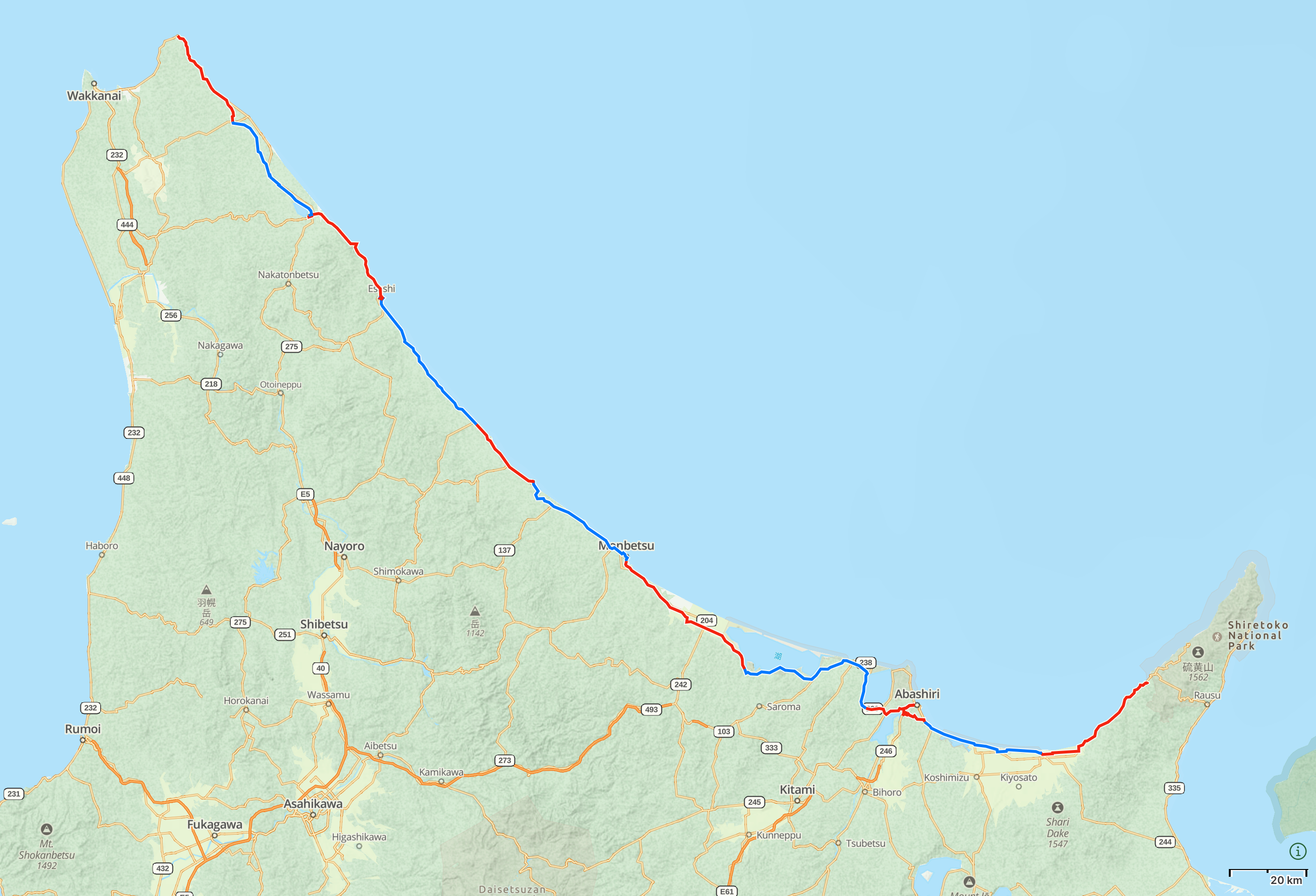
Salmon is a food like chicken or bananas. You can get it anywhere but if you bother to look you’ll quickly find something that tastes better. If you don’t have to slaughter the fish yourself you can even think of it as some generic pinkish-orange sustenance. But in the small restaurants around the Shiretoko Peninsula it is something marvelous, a balance of textures and tastes I didn’t know existed. We eat it on bowls of rice, in the Japanese style called donburi, and we leave the village of Utoro after a breakfast of this salmon on toast. It’s made by a photographer couple, the Itos, who run a café four days a week and spend the rest of their time photographing bears. A video of one of their photo-shoots loops on a screen while we eat our toast and drink our coffee (choose from three blends: Brown Bear, Siberian Flying Squirrel, Spectacled Guillemot). It shows a brown bear in a dense forest in heavy rain, looking perfectly happy and in its place, its fur a galaxy of browns and ochres, and I catch myself watching it for a very long time.
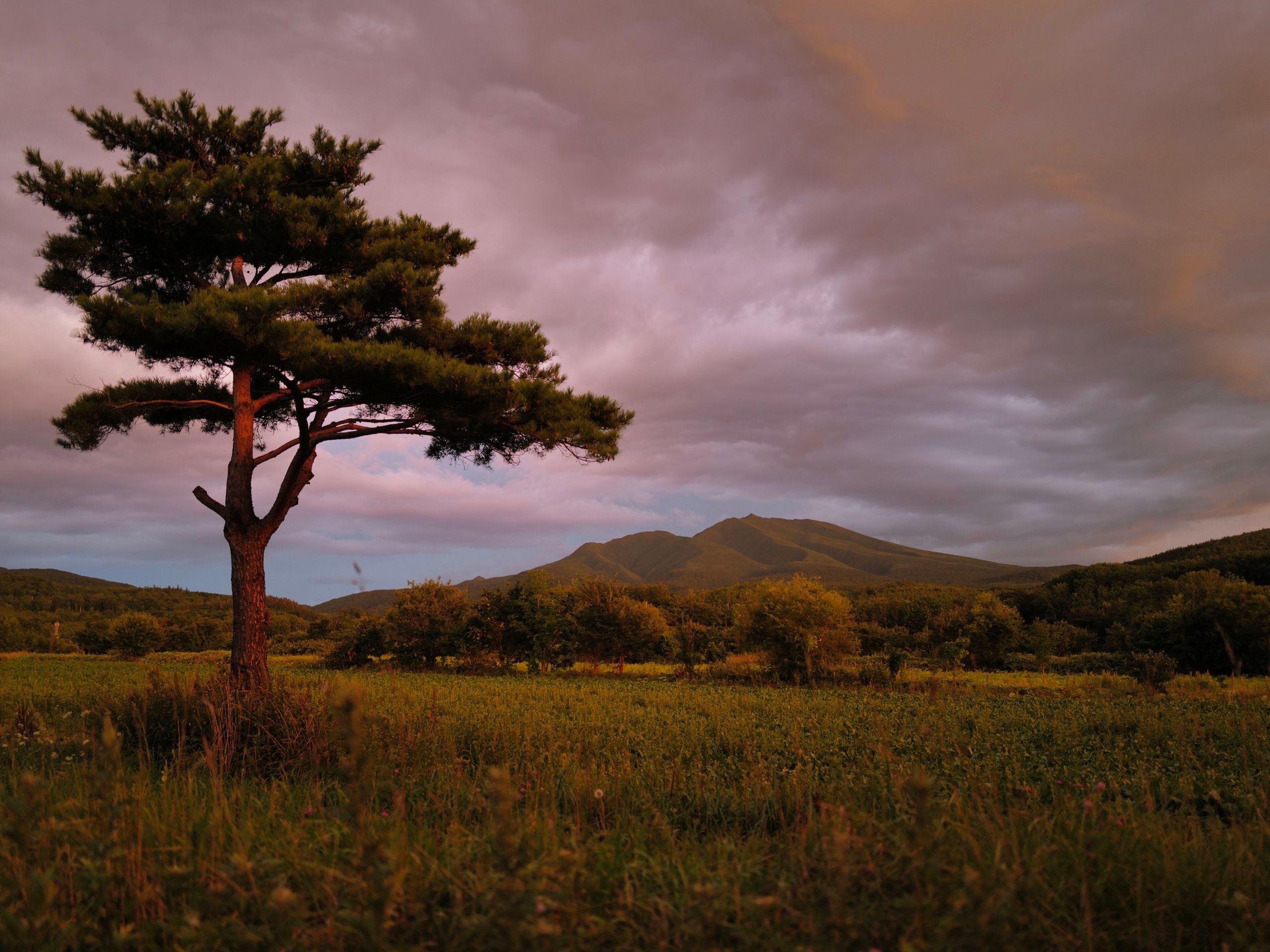
There’s a German documentary film from 1985 called Gasherbrum – Der Leuchtende Berg which tells the story of the two mountaineers Reinhold Messner and Hans Kammerlander as they attempt to do the first traverse between two 8,000-meter peaks without returning to base camp: Gasherbrum II and Hidden Peak, in the Karakoram. It was made by Werner Herzog and has captivated me for a very long time, particularly for a scene towards the end. Shot after their successful traverse, Messner sits naked in a glacial pool and tells Herzog why he goes on these journeys:
I have the feeling that I can write on these enormous partitions, of 3,000 or 4,000 meters high, as a professor writes on a blackboard with a chalk. But I don’t only make that to write these lines, of the imaginary lines, I live these lines. I also have the impression that after, these lines remain there, even though I am the only one that can feel them, see them, that I live them and nobody else will ever be able to see them, but they are there and they will remain forever there.
When I left Kagoshima in April 2017, my plan was to walk to Cape Sōya, the northernmost tip of the Japanese mainland. It wasn’t until three months later that I realized I simply do not like the aesthetics of the line you make if you cross Hokkaido by walking from Hakodate, the port on its southern tip, to the cape. This line runs almost entirely along the island’s western coast and completely avoids the interior. So I tried to think of a more beautiful imaginary line and I came up with the idea of walking to Nemuro, at the island’s eastern end, and that is how we ended up there with Gabor in late August 2017, the end of that journey and the beginning of this.
Earlier this year, as I sat and pored over maps of Japan, I found it very hard to come up with a similarly beautiful line across Hokkaido if I were to continue my walk from Nemuro. But one part was never in doubt: I would have to walk from the Shiretoko Peninsula all the way along the coast of the Sea of Okhotsk.
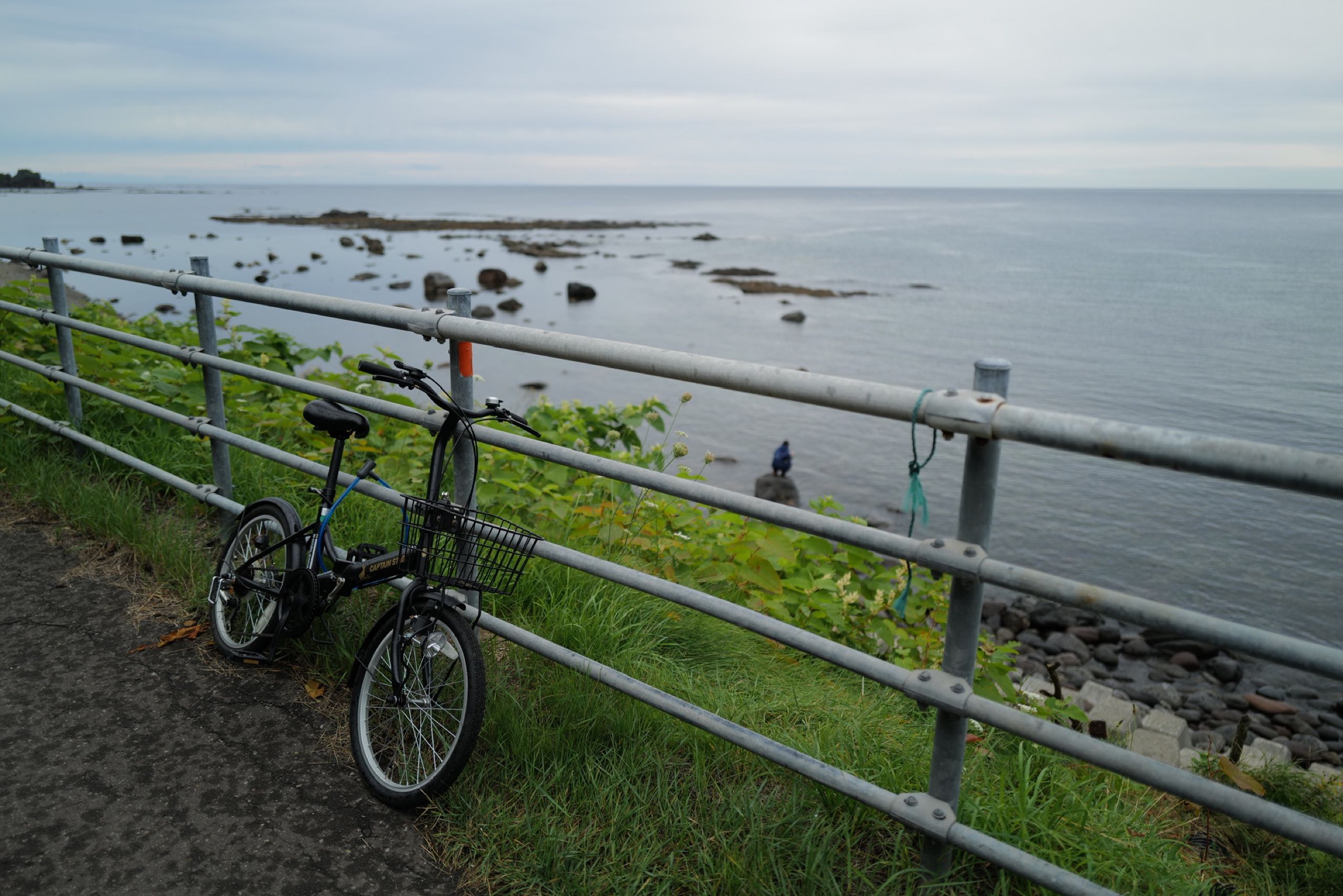
The only apparently walkable coastline of the Sea of Okhotsk is its Hokkaido shore, which forms Japan’s northern edge in a great arc of some 400 kilometers, yet this sea, four times the size of Japan, doesn’t have a Japanese name. Here they call it Ohōtsuku-kai, the Japanese rendition of its Russian name. We realize the only person we know who has been on any of its shores is our cousin Jóska, who once drove a jeep with his friends from Hungary to Magadan, the Soviet prison town, 1,800 kilometers north across this grey expanse from where we stand. Kagoshima, the other end of Japan, is the same distance away.
I generally avoid coastal roads when I can. They’re flat, straight, humid, exposed to sun and rain, and are usually the road taken by everything else, too, mainly trucks. There aren’t a lot of trucks on this first day as we walk to Shari, the town whose main street two brown bears once strolled down in broad daylight, just guys fishing in the dense air under grey skies. A roadside stand sells ice cream. Another roadside stand, 20 kilometers away, promises lunch but is shuttered, and we sit on its steps and eat biscuits and make coffee. An old man emerges from the building without a sound and takes the biscuit wrappers then disappears back inside. The mountains and forests of Shiretoko recede and the great pyramid of Mount Shari rises to the southeast.
We stroll to the bathhouse, elated after a good day’s walk, and in the dressing room we watch a large, round man, already undressed, watching a nature documentary about copulating nudibranchs on the televison. The animals do this by extending stout tubes towards each other’s electric blue and gleaming black bodies, not unlike two spaceships docking in orbit. We submerge in the salty waters of the bath then sleep in the cool night.
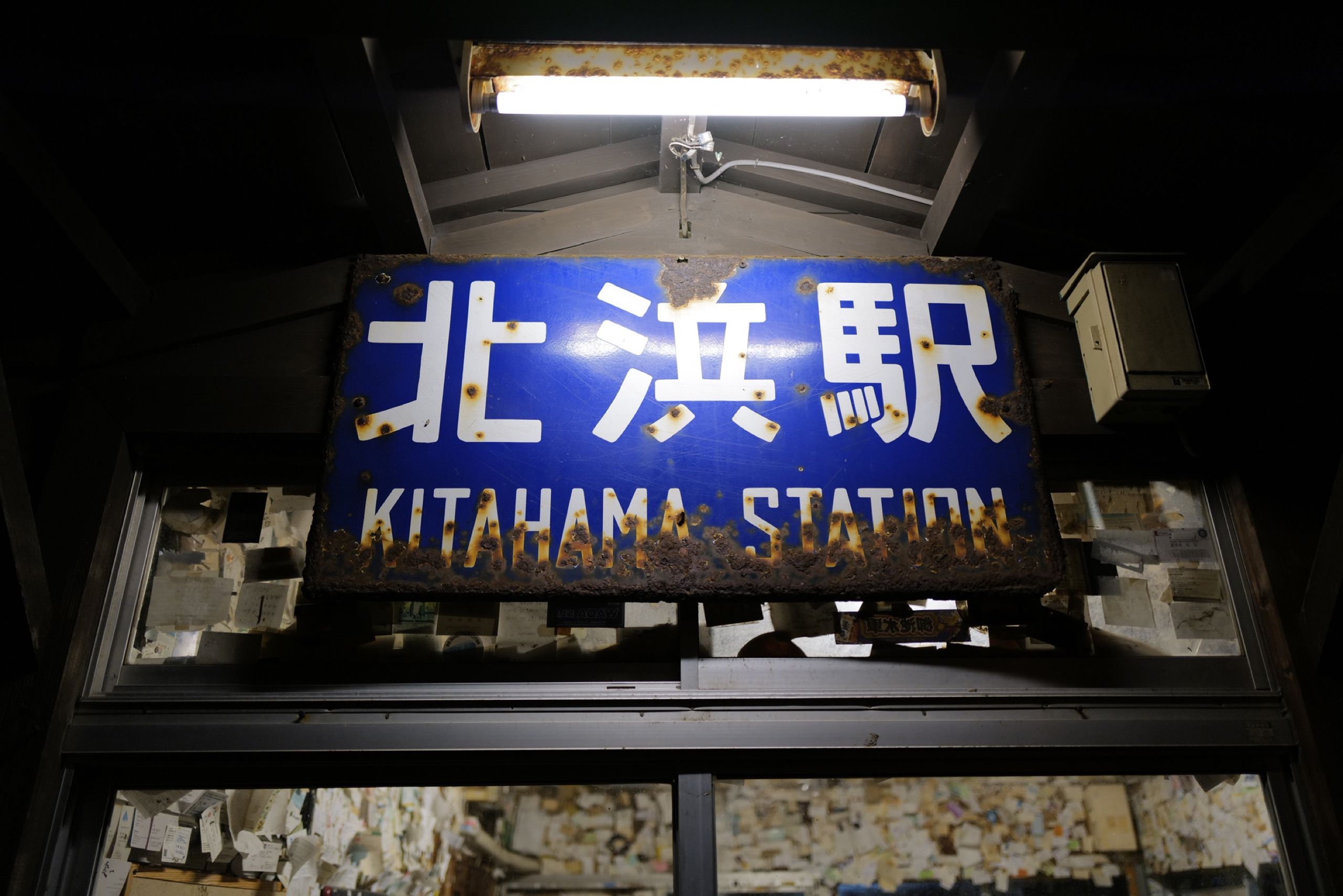
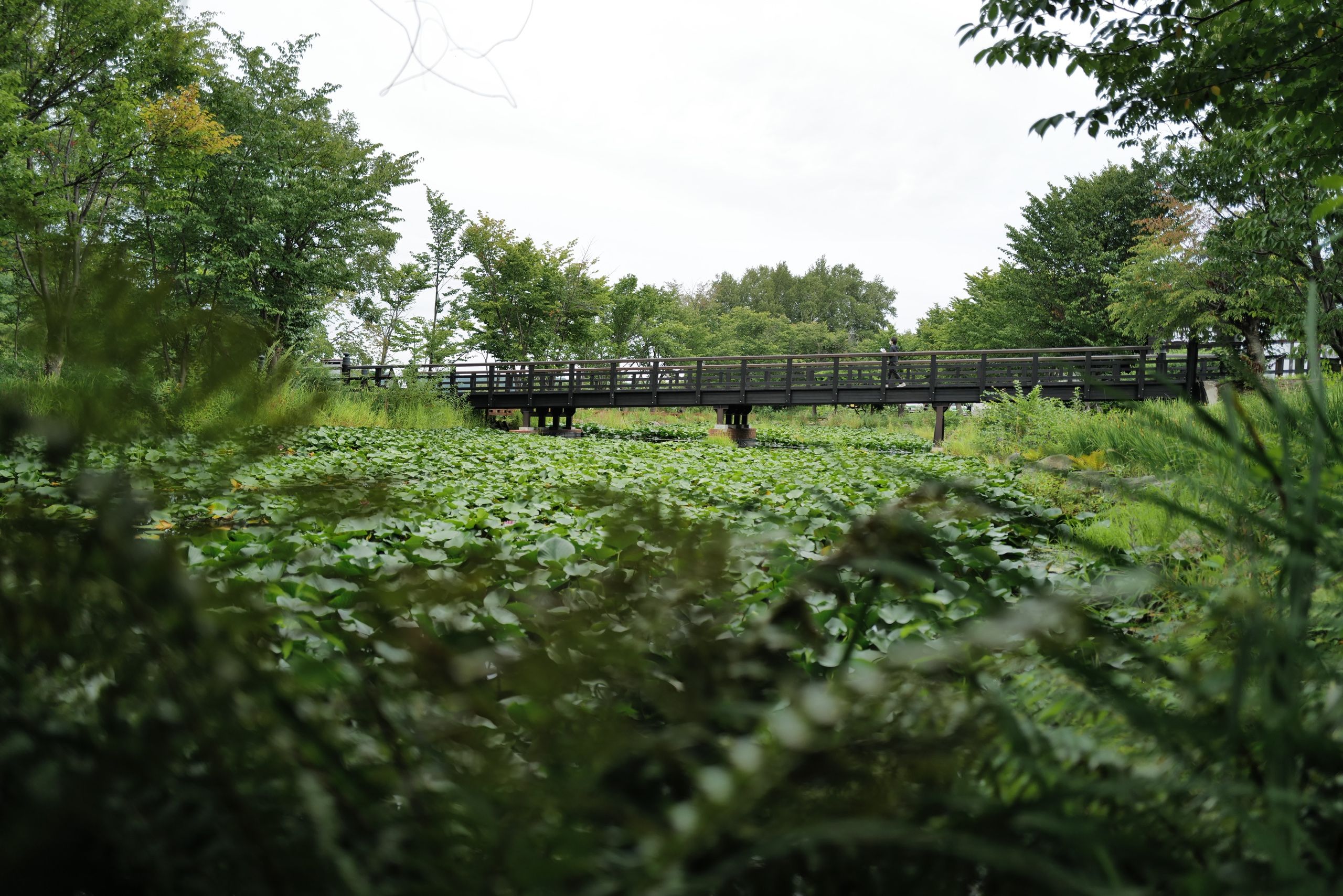
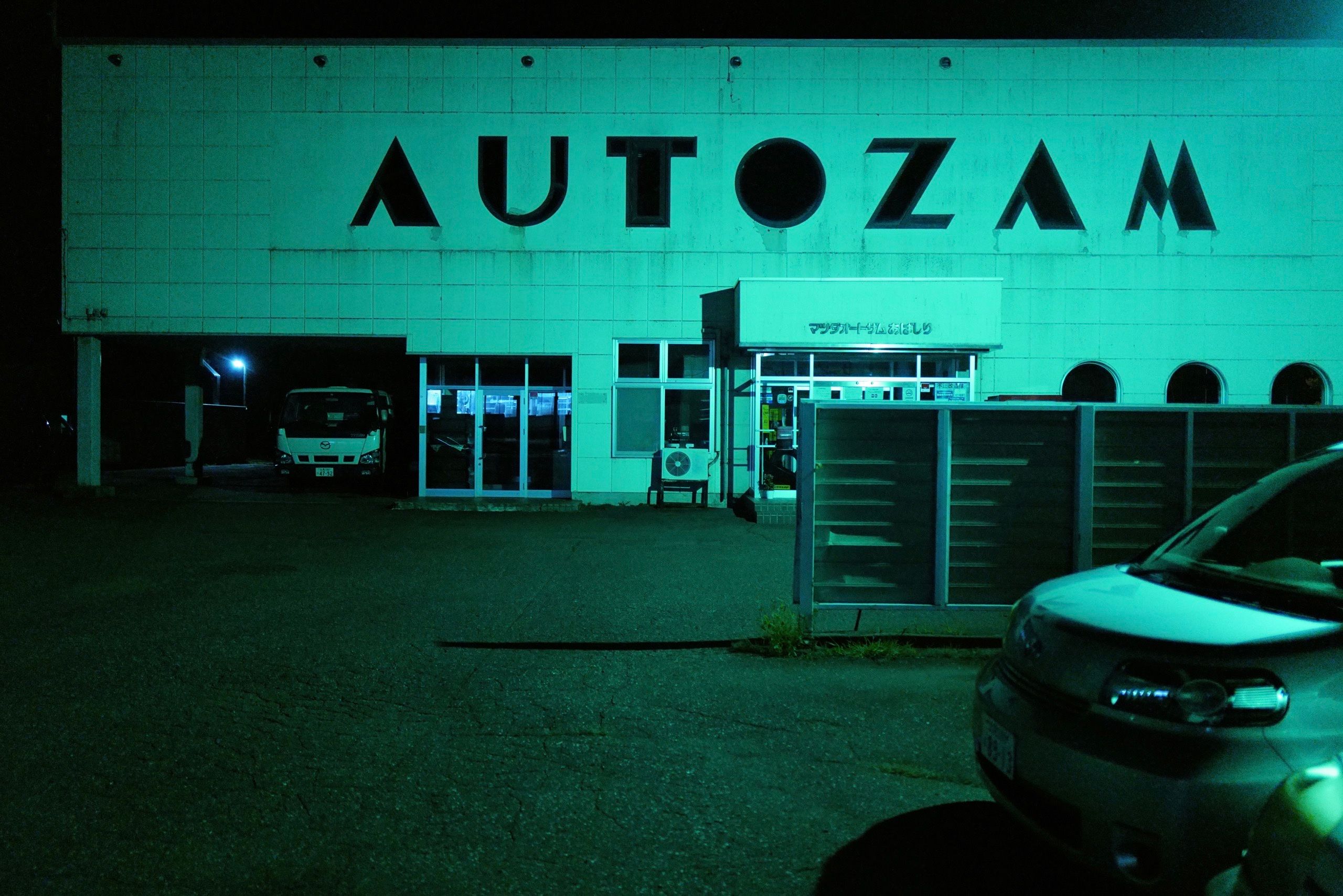

Before we left for Nemuro I had dinner in Tokyo with my friend and editor Timothy Harris, who has lately been translating into English the stories of Shiga Naoya, a writer from early 20th century Japan. Upon learning of my plan to walk the Okhotsk coast, Tim tells me that Shiga has a story, written in 1910, about a man and a woman traveling on a train north of Tokyo, the woman headed to Abashiri, on the Okhotsk coast, a journey which must have taken days back then. She is on her way to visit her husband and it is never stated but implied that her husband is in prison, for Abashiri is a place everyone in Japan knows as a prison-town, like Magadan as far away from the capital, and in as unpleasant a climate, as physically possible.
We reach it on a late morning, and make our way across its hills past a row of numbered housing estates named Horse Win. It’s a town of concrete blocks and dilapidated shopping arcades, a single bathhouse, a crude statue of a fisherman in front of its train station, the last one on the Okhotsk coast, in front of which you can pose as a prisoner behind artificial bars. Gabor is due back in Tokyo the next day and he leaves on the last train. There, on that city-planet, he will show pictures from our journey to someone who will struggle to believe that they were taken in Japan. I walk on, into the night, and sleep in an abandoned railway station on the shore of Lake Notori — the railway line used to run all along the coast, and for the next week and a half I will shadow its ruins.
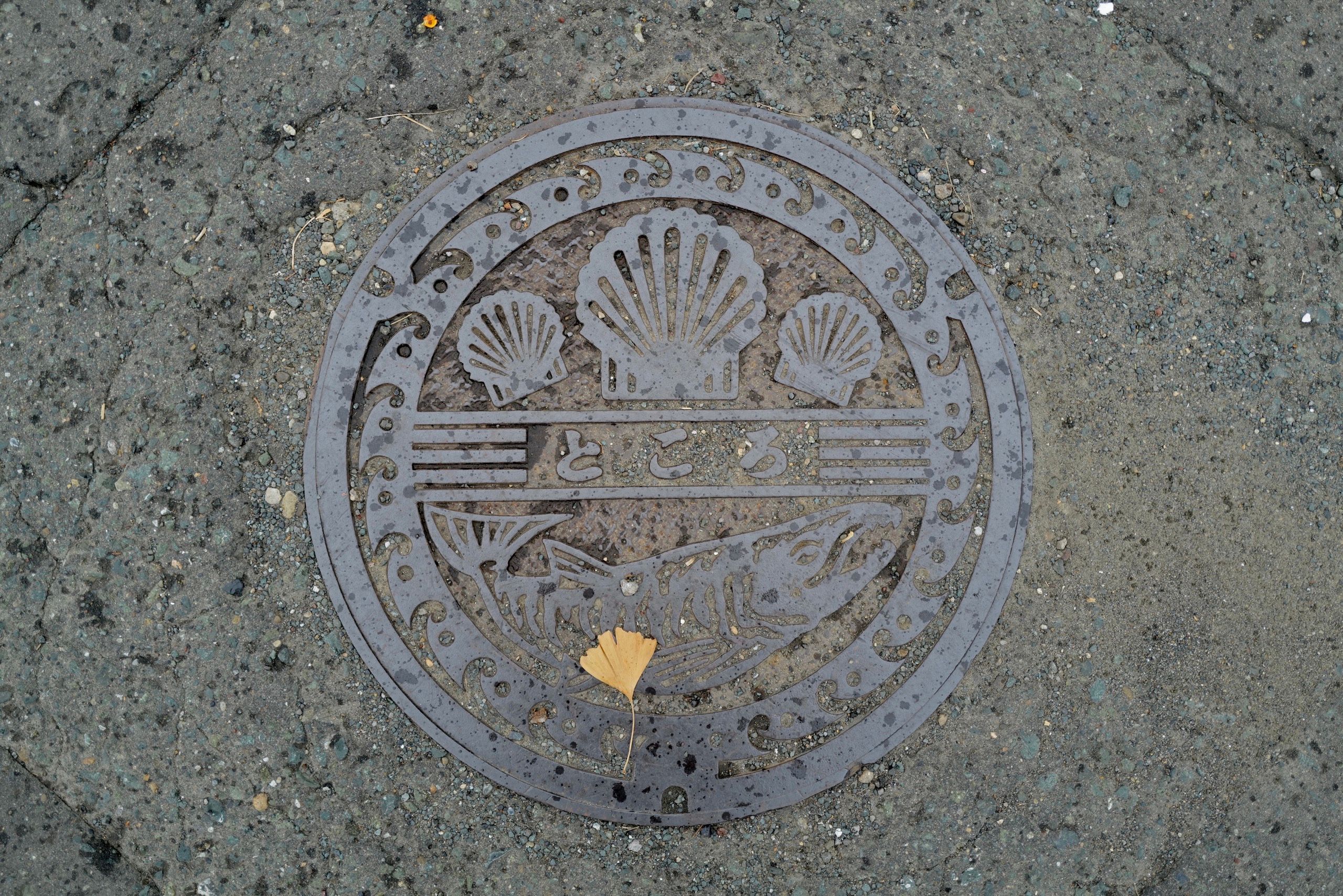
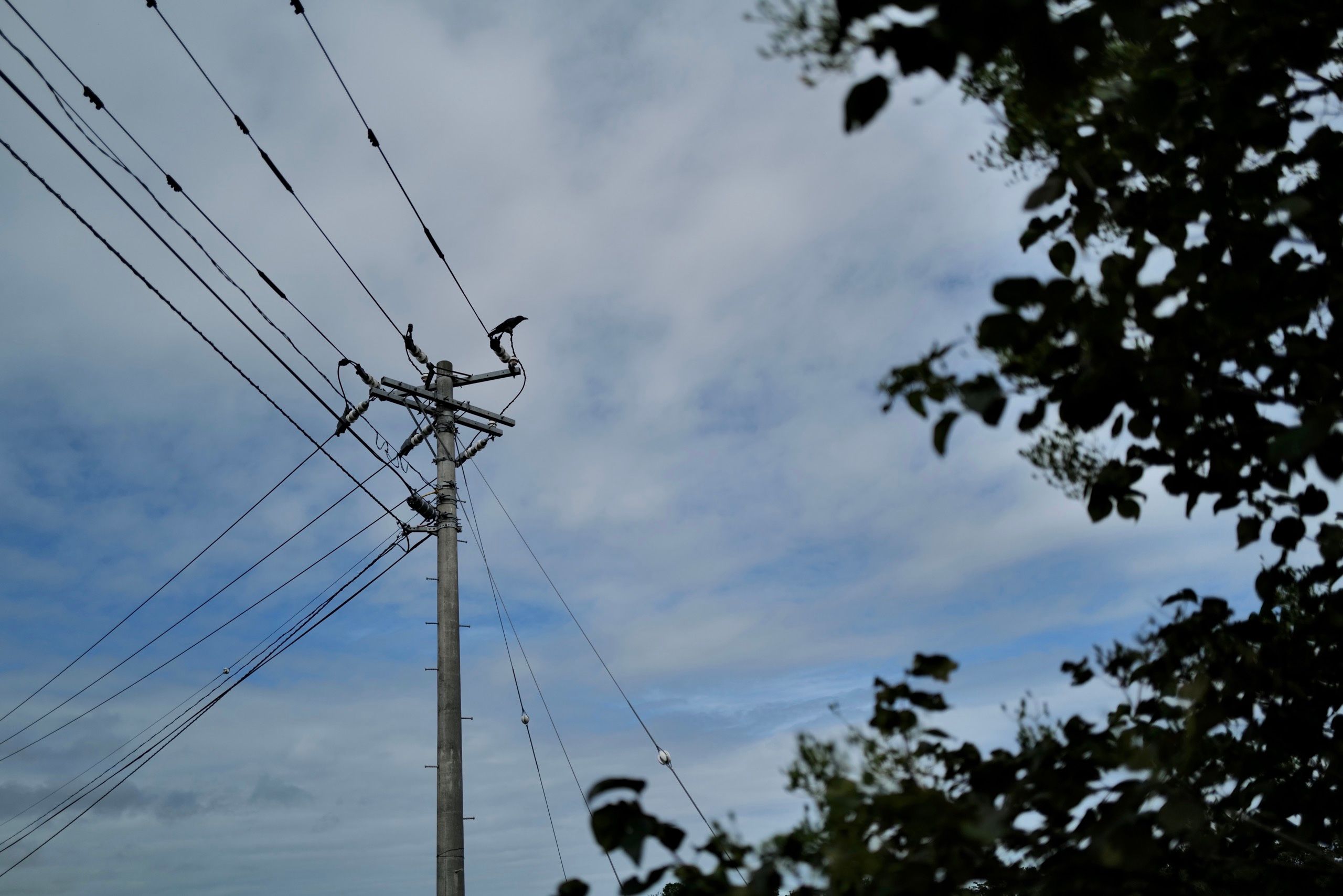
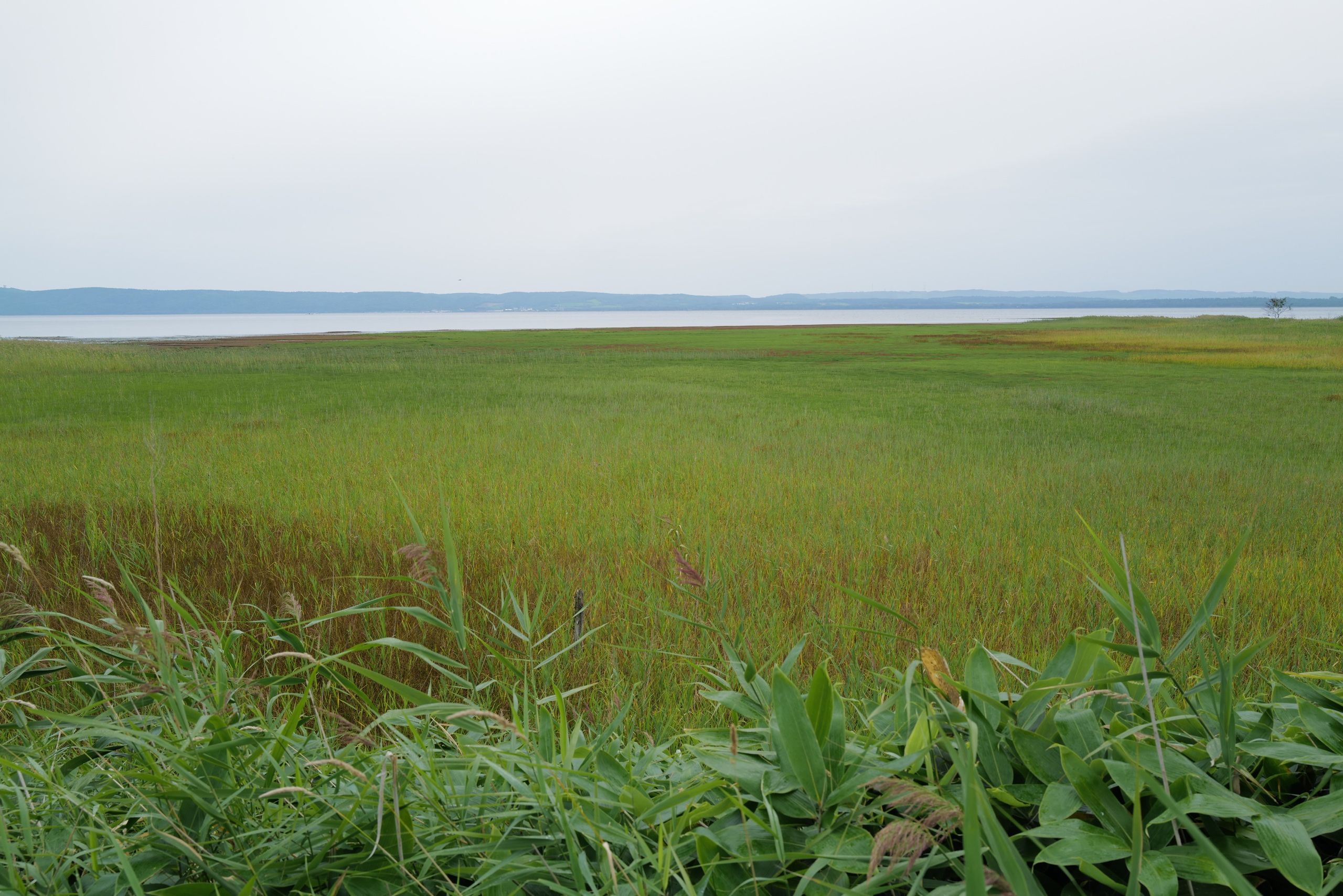


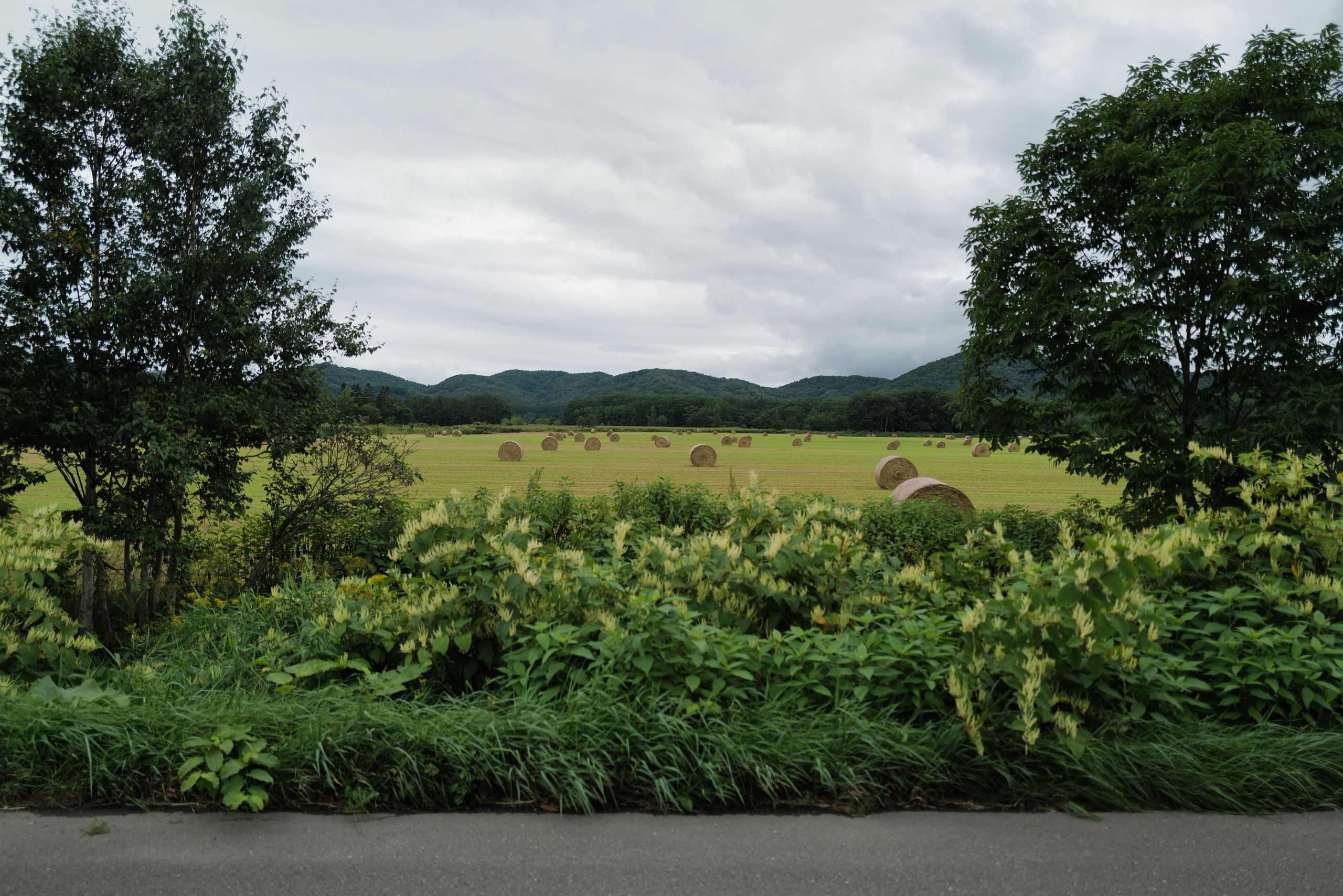
I have found on my journeys that in Japan it rains quite often on Wednesdays (strangely enough, the Japanese word for Wednesday is 水曜日, pronounced suiyōbi, which literally means water-weekday). It is also on a Wednesday, the last day of August, when I first walk all day in the rain, weaving my way around the large lakes between Abashiri and Monbetsu, a last glimpse in the late morning of the volcanoes of the Shiretoko Peninsula before the clouds roll in.
The road is a truck road and all day is a grey twilight, and I walk with a torch and use my umbrella as a shield, timing the shock-waves of the trucks which roll past non-stop. They are like waves in a sea-storm, and some of them behave like rogue waves, their shock-waves arriving out of rhythm, twisting my umbrella from my hand and blasting me with spray. At a construction site, a man stands in the rain in heavy-duty waterproof overalls, smokes what must be a waterproof cigarette, and nods a cheerful hello in my direction, and we both grin like lunatics, out on a day like this. A roadside restaurant serves an outrageous lunch of raw scallops over rice, the specialty of this water-world.
Night falls and I walk in a small bubble of light, the rain pattering on my umbrella, and I almost crash head on into a large white owl. I duck left, the owl swerves the other way, and flies on without a sound, its large white wings dissolving into the black night. It’s only the fifth owl I’ve seen in my life.
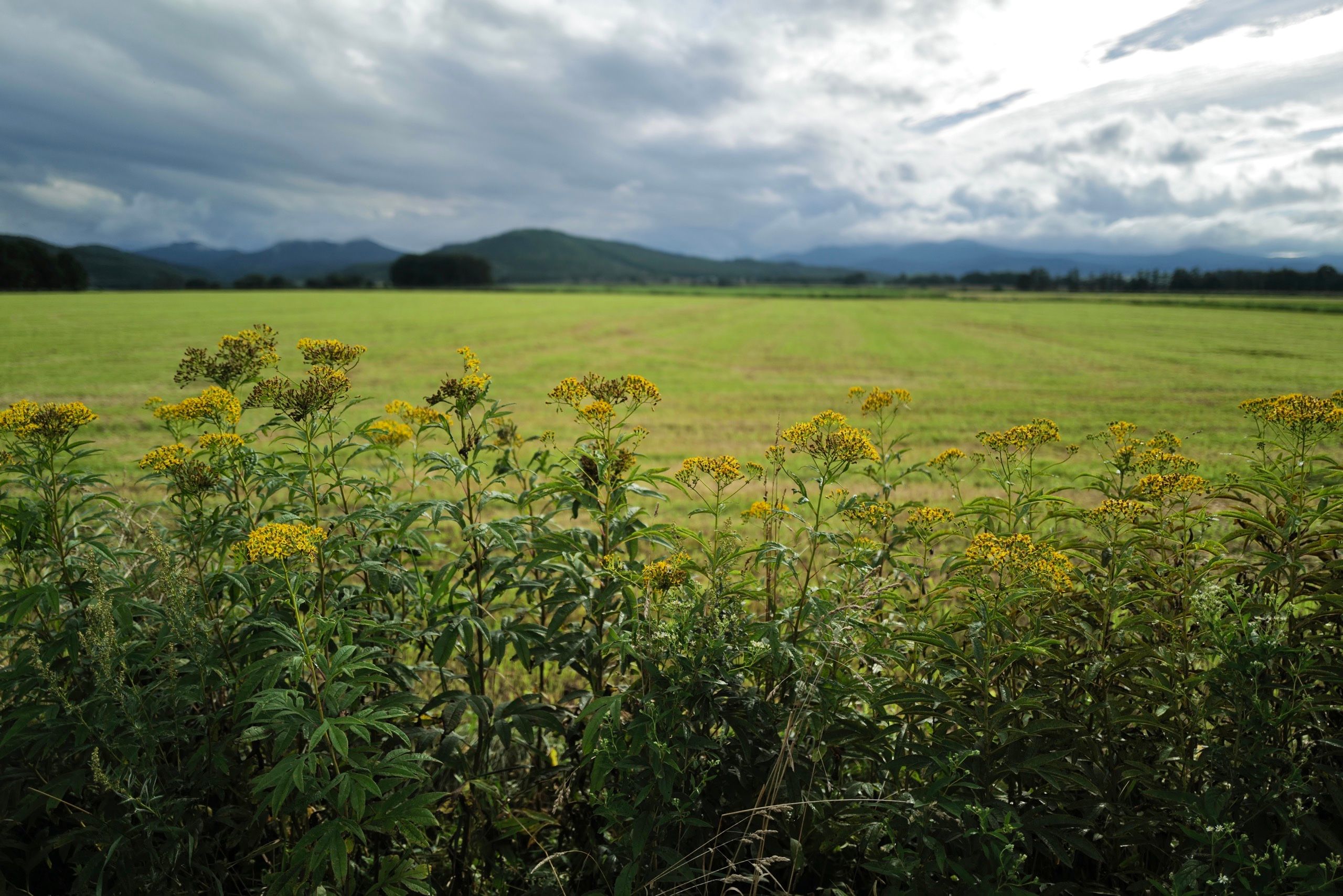

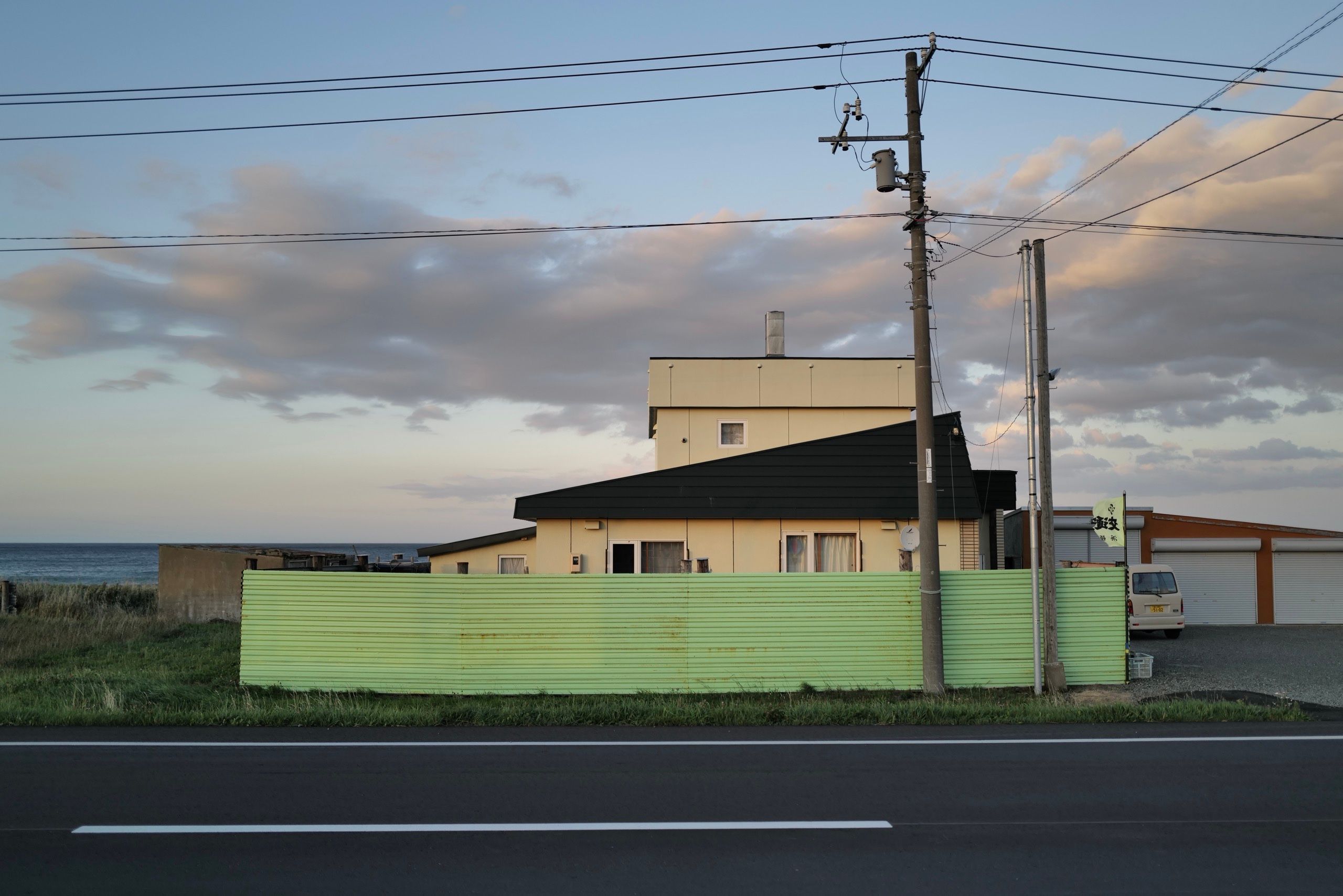

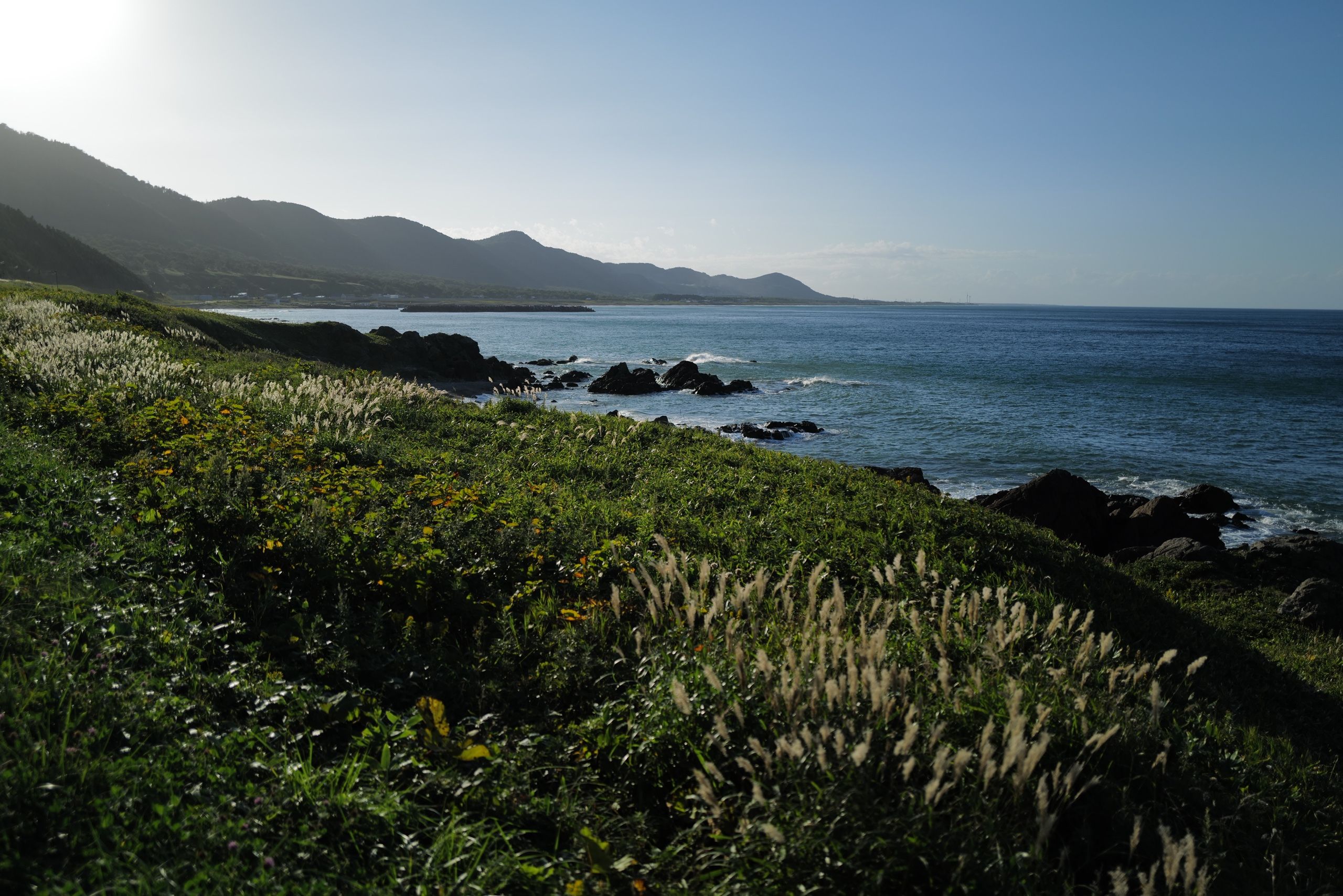
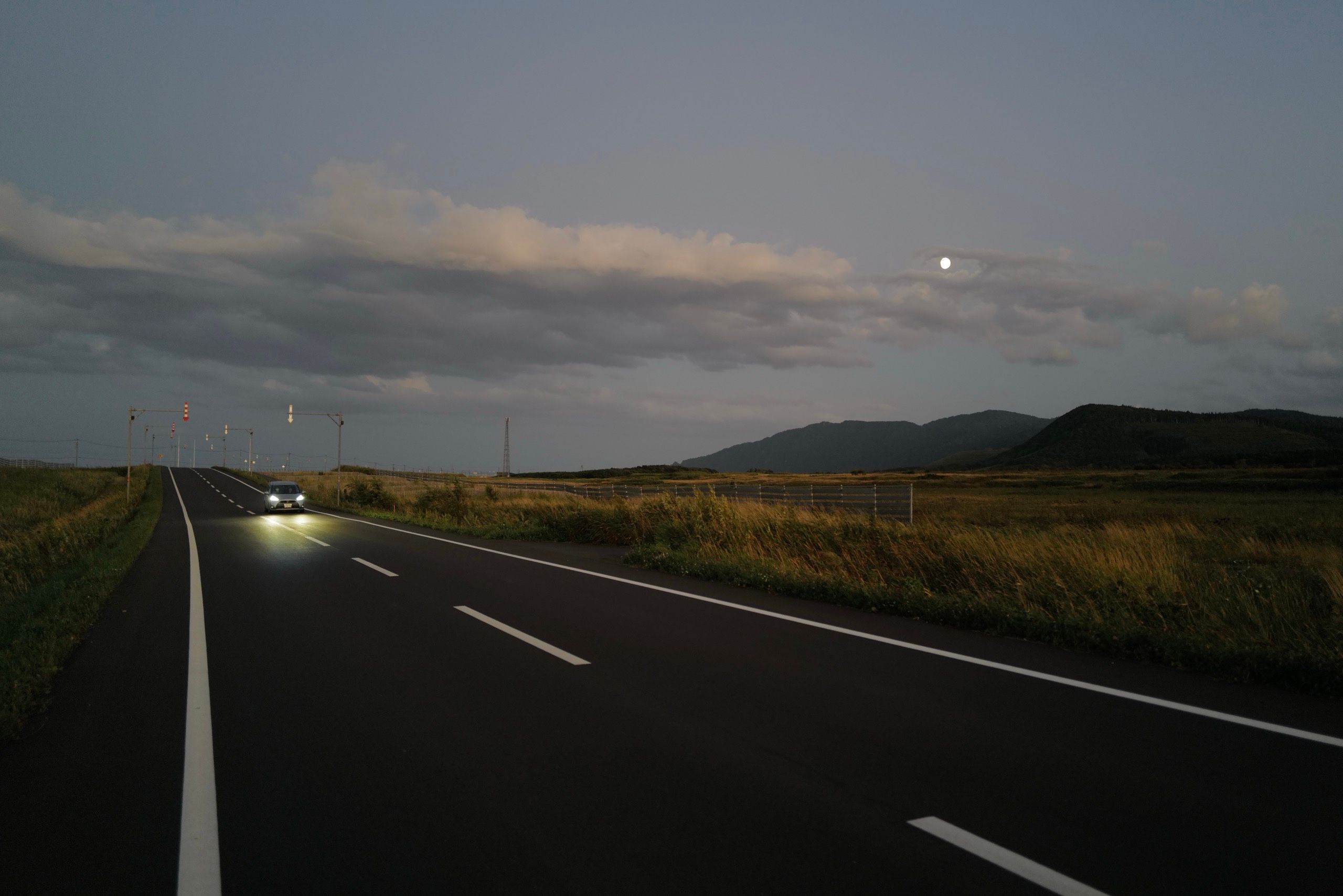
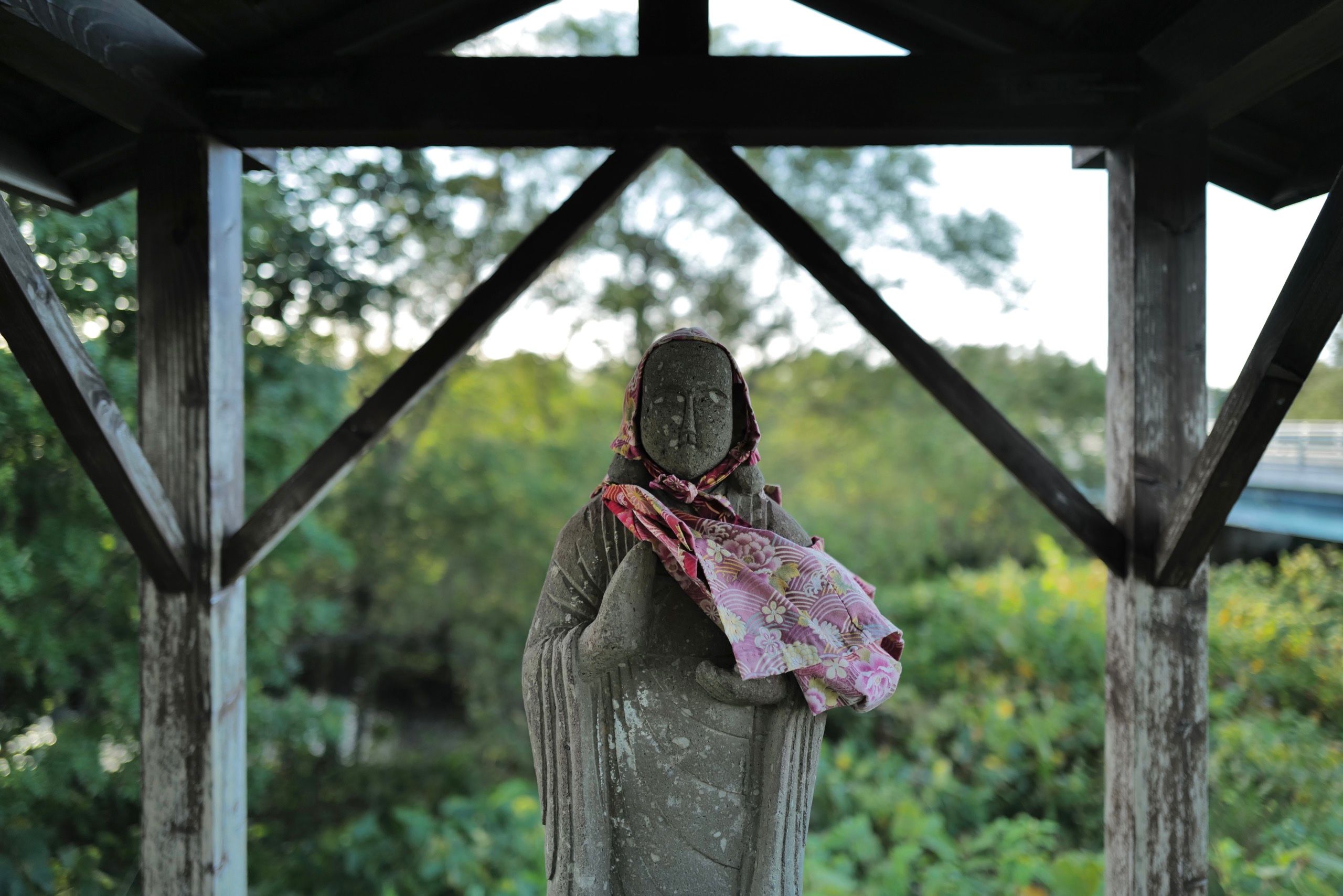
The clouds clear and the days fade into each other. The sea turns a deep indigo. Sidewalks appear and run for hours then disappear without a sign. In the evening the Caligula japonensis silk moths come out, enormous creatures, and in the mornings their brown wings litter the ground like fallen leaves.
But it is still summer, the weather very strange. One day a heat wave rolls in and I walk all day in a sweltering, humid haze, my clothes drenched, blisters rising on my feet. Typhoon 11 hits the south of Japan and here, in the extreme north, it drives the humidity away, turns the sea a mesmerizing turquoise blue, and I walk all day in a roaring wind.
The villages thin out, the roadside restaurants are all gone. One night the strip of land between the road and the sea lights up with dozens of green dots in the light of my torch and I realize they are dairy cows, most of them asleep, sheltering under scraggly trees, some keeping watch. In a still, wind-swept village, a cleaning robot sweeps the floors of a library. I pass a sign marking the 45th parallel, the last one which still crosses Japan. I lie in the grass, overwhelmed by an crushing wave of fatigue, but from there on my steps are a little lighter, the road less flat. I watch Cassiopeia in the night sky from my bed on the porch of a shrine in a clearing.




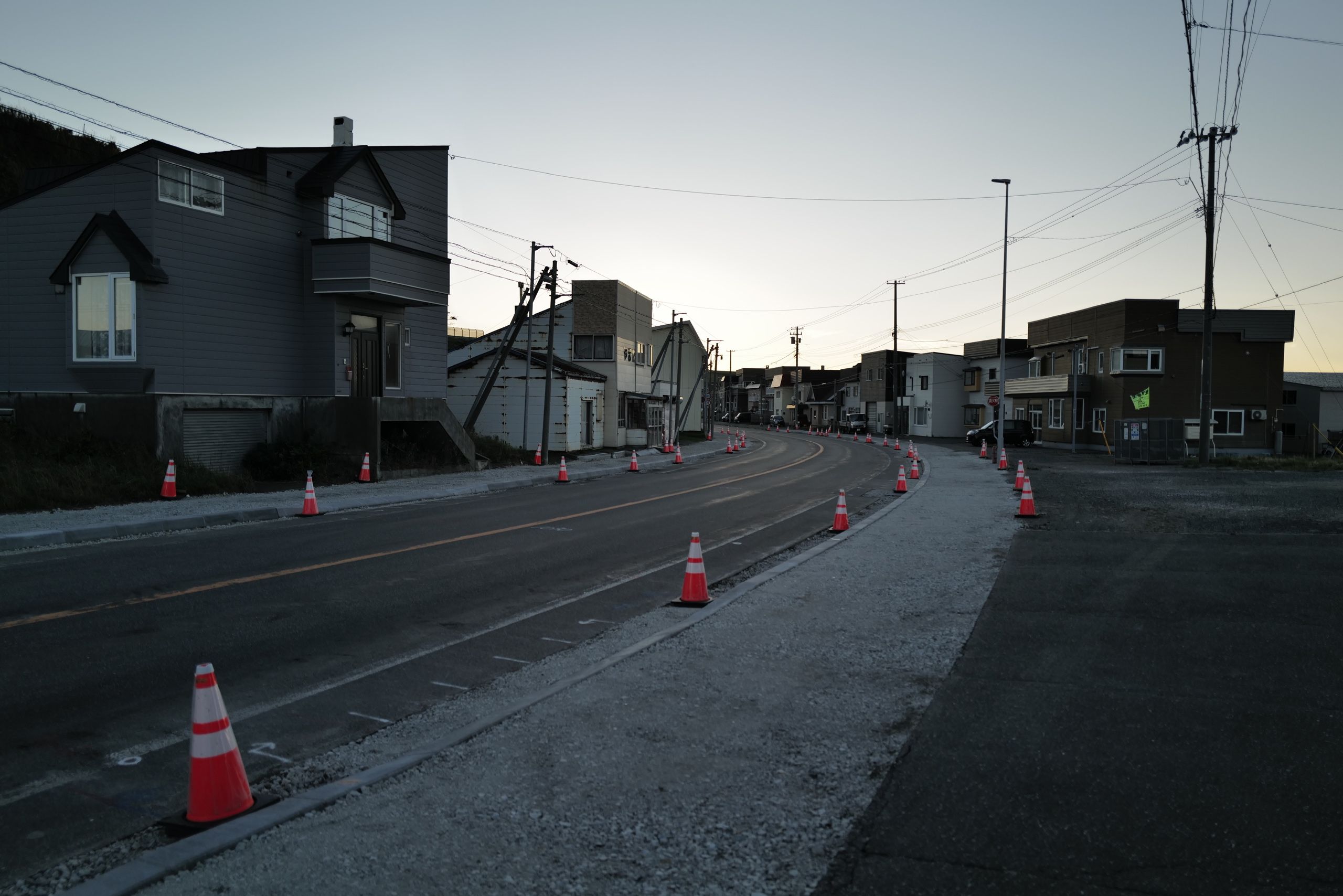
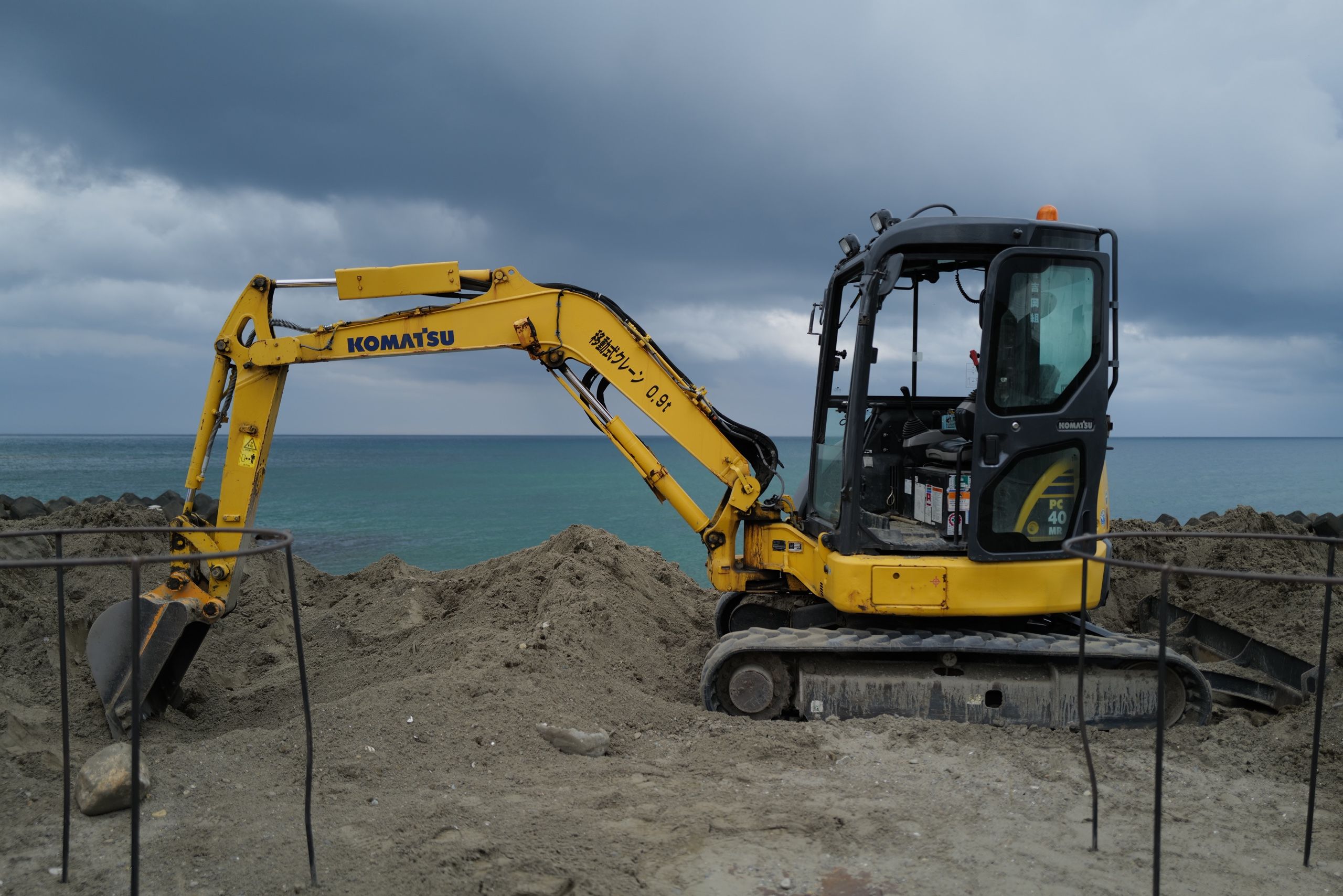
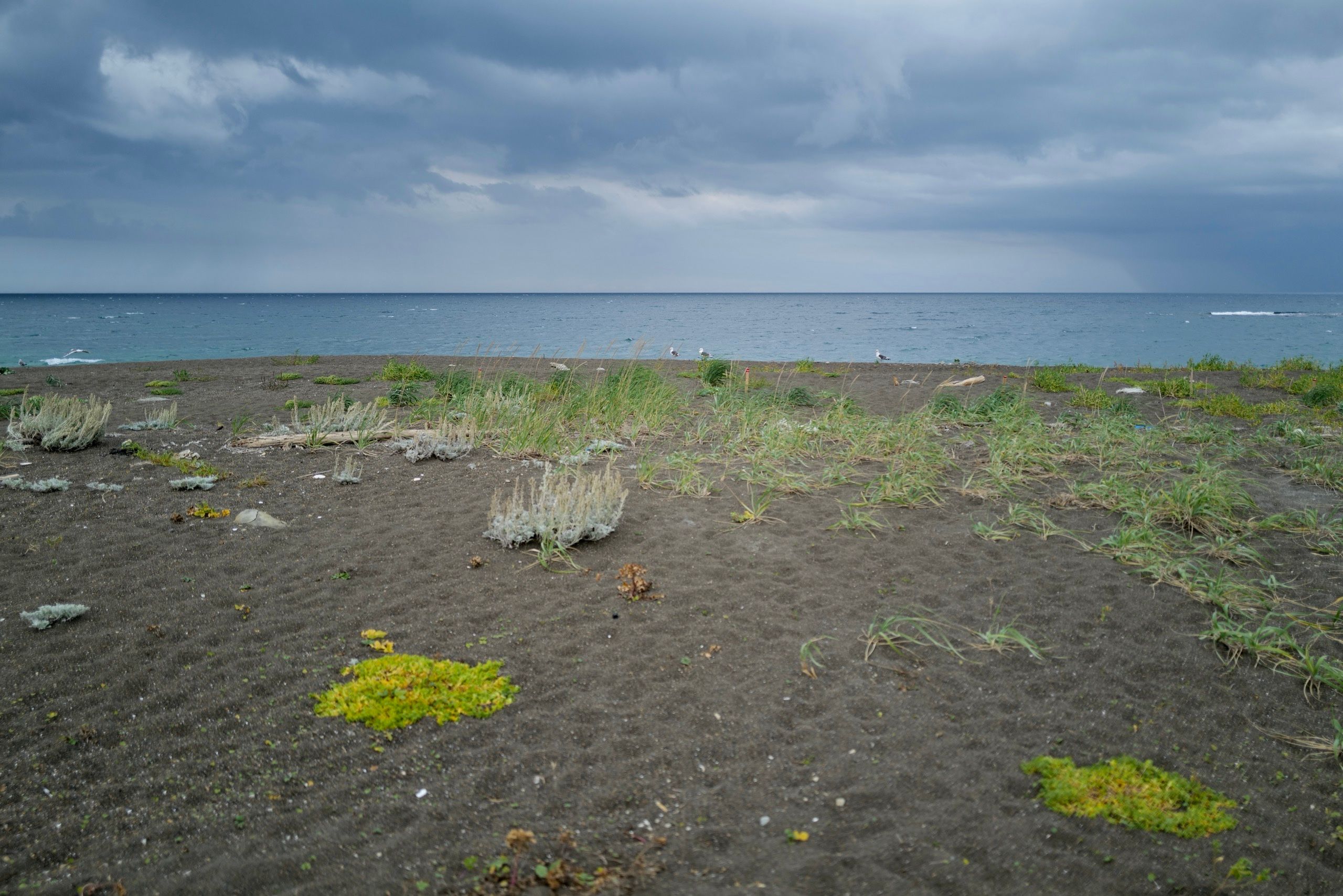
Hokkaido narrows to a blunt tip of rolling green hills. It is how I imagine the south of England. Ink-black clouds race over from the Sea of Japan, drench the road with warm rain, and are gone in a matter of minutes. There’s an overflowing ashtray by an old-fashioned Japanese toilet in a fishing village and I wonder how you can chain-smoke a dozen cigarettes while you squat. Cape Sōya is maybe three hours away. There’s a last spot on the road where the beach is accessible and I walk down on the dark sand and watch the Sea of Okhotsk for the last time, Sakhalin on the horizon, and at that moment I spot the first flock of geese heading south, their calls loud and clear over the waves.
I reach the cape in a sunset of hallucinatory colors which fade into the sea and my legs give and I sink into the grass. I want to walk on but I cannot. I think of Alan Booth, who slept here on the evening of June 28, 1977, or was it the twenty-ninth, and walked from here to Cape Sata, the other end of Japan, the journey which became the subject of his book The Roads to Sata. Just what power these roads have, by a sea with a strange name, on an island which never ends. I brush my teeth at the Northernmost Public Toilets, slightly to the south of Szeged, the city in southern Hungary where I was born, then I sleep, and wake at first light to the sound of crafty birds, Japanese birds, fishing for breakfast on a sea of glass by the La Pérouse Strait.


